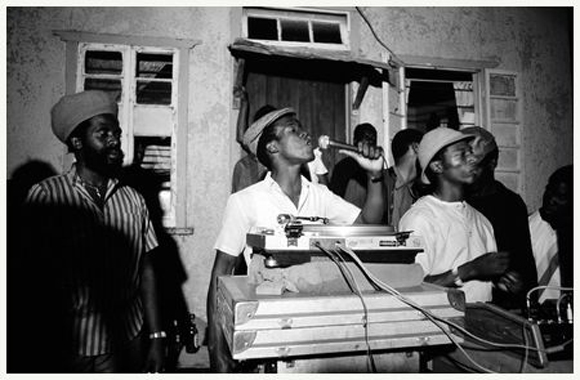Clive Bright AKA Tenor Saw is generally regarded as one of the greatest voices of the dancehall era. Like too many artists from this period in Jamaica, Tenor Saw died too young, his lifeless body discovered on the side of a Houston, TX freeway in 1988.
1. Tenor Saw, who honed his unique voice singing in the Seventh Day Adventist Church, recorded his first single “Roll Call” in 1984. A religious song sung over the “Queen Majesty” riddim, the single was produced by George Phang and released on the Powerhouse label.
2. Tenor Saw sought out Sugar Minott, whose Youthman Promotion sound was the ruling sound, by throwing rocks at his house until Minott came out to confront the boy. According to Minott, Saw apologized and said “bwoy Fadda, a long time me a try yuh nuh and mi caan get nobody fi listen mi.” Their friendship started right there in front of Minott’s house.
3. Tenor Saw’s biggest break came in 1985 when he followed Minott to Jammy’s studio in Waterhouse so that Minott could voice over a dubplate of Jammy’s Sleng Teng riddim. The dubplate is made to contain 4-tracks, two on the a-side, and two on the b-side. Minott voiced three tracks and invited Tenor Saw to voice the fourth. The result was “How Water Walk Go A Pumkin Belly.” The title was eventually shortened to “Pumkin Belly” and was Tenor Saw’s first big hit.
4. Tenor Saw’s stellar “Victory Train” anthem was arranged and co-produced by Freddie McGregor. It was released as a 12″ in 1985 on the Black Victory label.
5. Tenor Saw’s biggest hit was “Ring The Alarm,” which he voiced over the Stalag 17 riddim. 1985 was the year of a legendary four-way clash between Minott’s Youthman Productions, Prince Jammy’s crew, the Black Scorpio sound system, and the Arrows crew. Tenor Saw made dancehall history when he deconstructed the opposing sound and jumped to the stage to declare “Ring the alarm, another sound is dying.”
6. According to Minott, Tenor Saw was most interested in singing conscious lyrics and that the “bad bwoy” songs were usually written strictly for the sound clashes.
7. Success in Jamaica sent Tenor Saw to the US in 1987, where he toured extensively with Freddie McGregor. Rumours start circulating about Tenor Saw’s excessive cocaine use and unraveling mental state.
8. In 1988, Tenor Saw was signed to RAS Records by label chief Doctor Dread. They got to work on a new album immediately. The Roots Radics were brought into Lion and Fox Stusios in Washington, DC to lay down the riddims. When it came time to voice the riddims Tenor Saw could not be found. He never resurfaced and those riddims were eventually voiced by Yellowman at Lion and Fox for the album Yellowman Rides Again, which was released in 1988.
9. On October 26, 1988 the Jamaica Gleaner reported that Tenor Saw had been shot and killed in New York City after a domestic dispute. What the paper did not know at the time was that Tenor Saw was killed two months earlier in August 1988. His body was found on the side of a road with the official cause of death determined as a case of hit and run. However, after performing an autopsy, the Houston medical examiner listed his cause of death as pneumonia. Others insist to this day that he was murdered.
10. As Rick Sawyer points out in The Tragedy of Tenor Saw “’Ring the alarm, another sound is dying’” was meant as taunt, but, in retrospect, it sounds like Tenor Saw’s epitaph.”
Here is the excellent tribute song that King Kong did for Tenor Saw titled “He Was A Friend.” It was reissued several years back by Dug Out on a 12″.


Feature painting by Sil Cunningham
Where was he buried ? What was he doing in Texas?